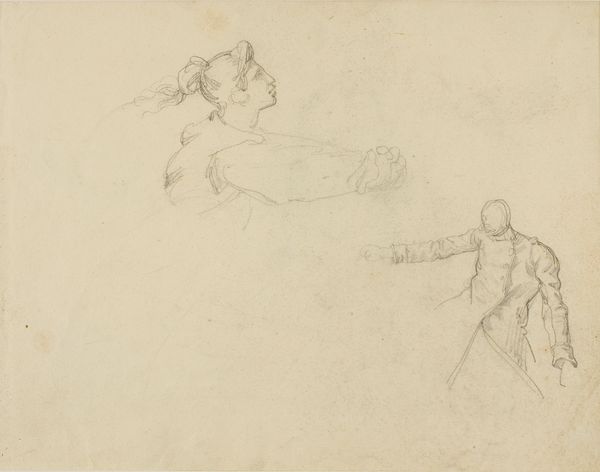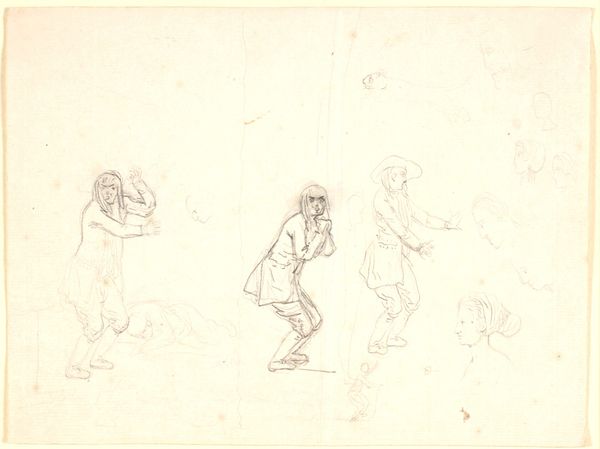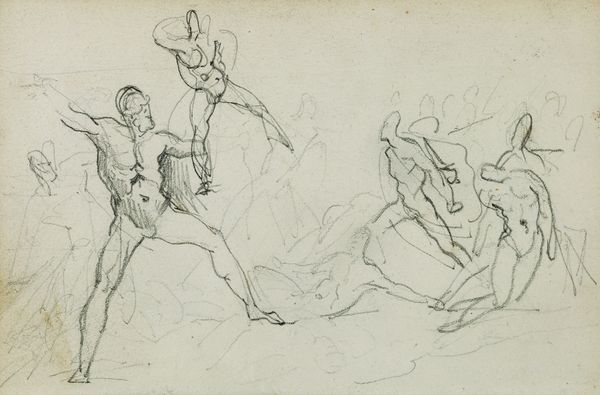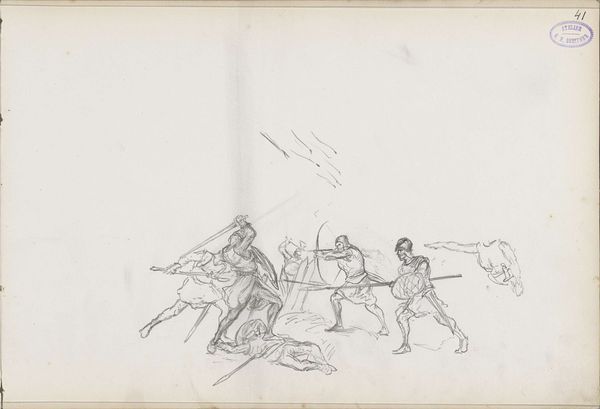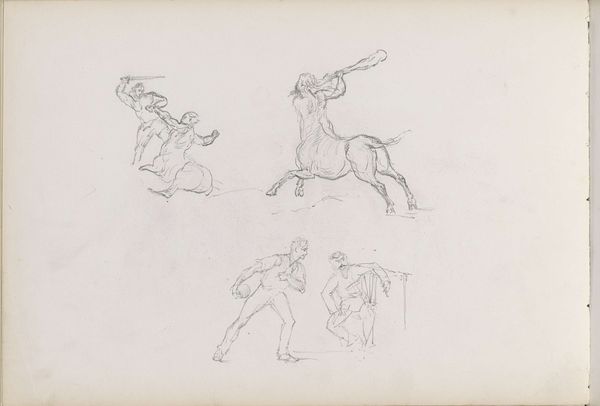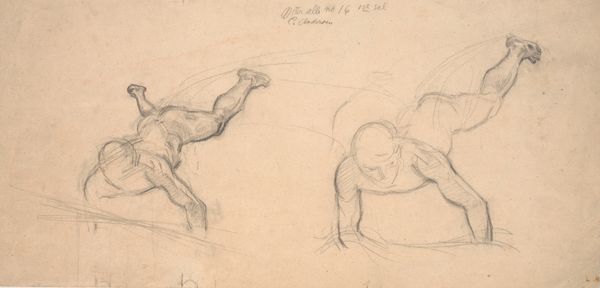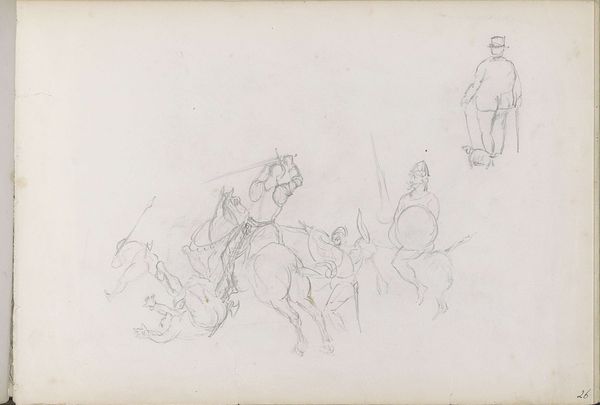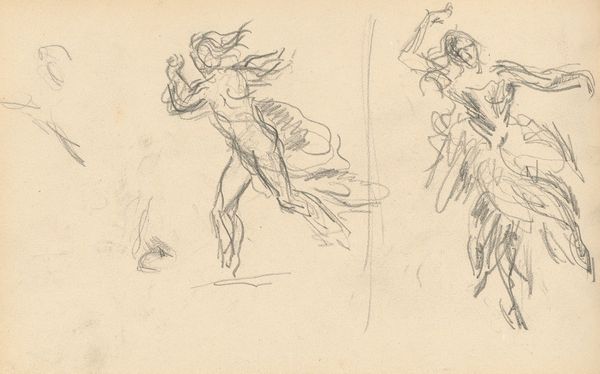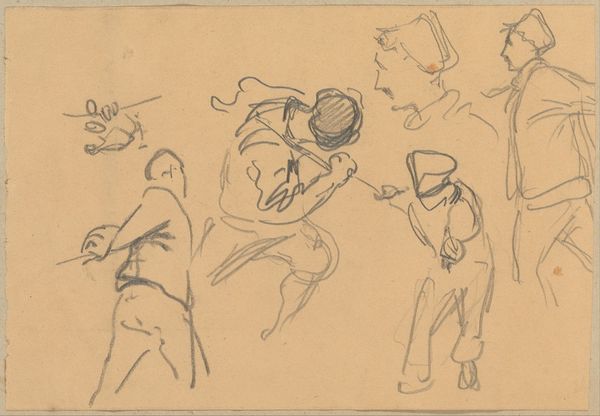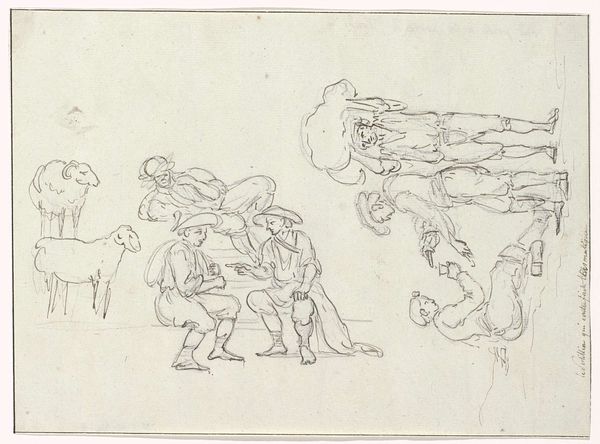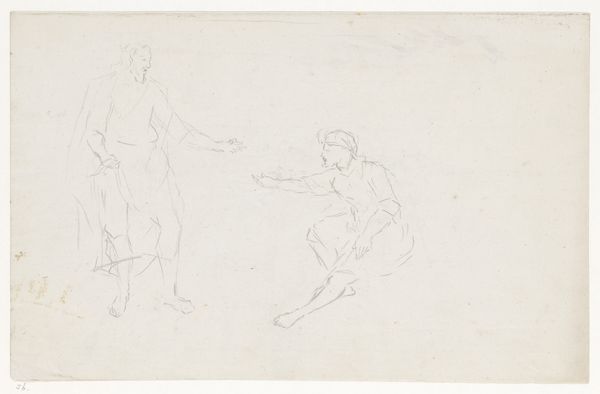
Gevecht tussen een soldaat met een zwaard en twee mannen met een bijl en een pijl en boog 1873
0:00
0:00
georgehendrikbreitner
Rijksmuseum
#
light pencil work
#
quirky sketch
#
pencil sketch
#
incomplete sketchy
#
personal sketchbook
#
idea generation sketch
#
sketchwork
#
ink drawing experimentation
#
sketchbook drawing
#
sketchbook art
Copyright: Rijks Museum: Open Domain
Editor: So, this is "Gevecht tussen een soldaat met een zwaard en twee mannen met een bijl en een pijl en boog," which translates to "Fight between a soldier with a sword and two men with an axe and a bow and arrow." It's a pencil drawing by George Hendrik Breitner from 1873, here at the Rijksmuseum. It feels like a snapshot of a larger narrative, full of tension, but also a bit unfinished. What do you see in this piece, and how does it speak to its time? Curator: It's tempting to view this simply as a historical battle scene, but let’s consider the broader socio-political context of 1873. Post-colonial power dynamics were very tense. Is Breitner depicting a straightforward clash, or is he exploring power imbalances, resistance, and the romanticized visions of conflict that served to justify those power imbalances? Editor: I hadn't thought of it that way. The roughness of the sketch makes it seem less about glorifying war and more about the raw struggle. Could that rawness be a critique? Curator: Precisely. Consider how academic painting traditions of the time often presented idealized, heroic depictions of battle. Breitner, in his sketch-like style, departs from that, doesn't he? Could his deliberate lack of polish be a subtle form of resistance against established norms, a commentary on the dehumanizing aspects of conflict masked by grand narratives? Do you find that reading reflected in other works by Breitner? Editor: I need to explore his other work! This makes me question what I initially perceived as simply a historical scene. I thought I was just looking at an old battle drawing. Curator: And now? Editor: Now I'm wondering whose perspective we are actually seeing and how that perspective impacts the meaning of the scene. Thanks for the historical context!
Comments
No comments
Be the first to comment and join the conversation on the ultimate creative platform.
